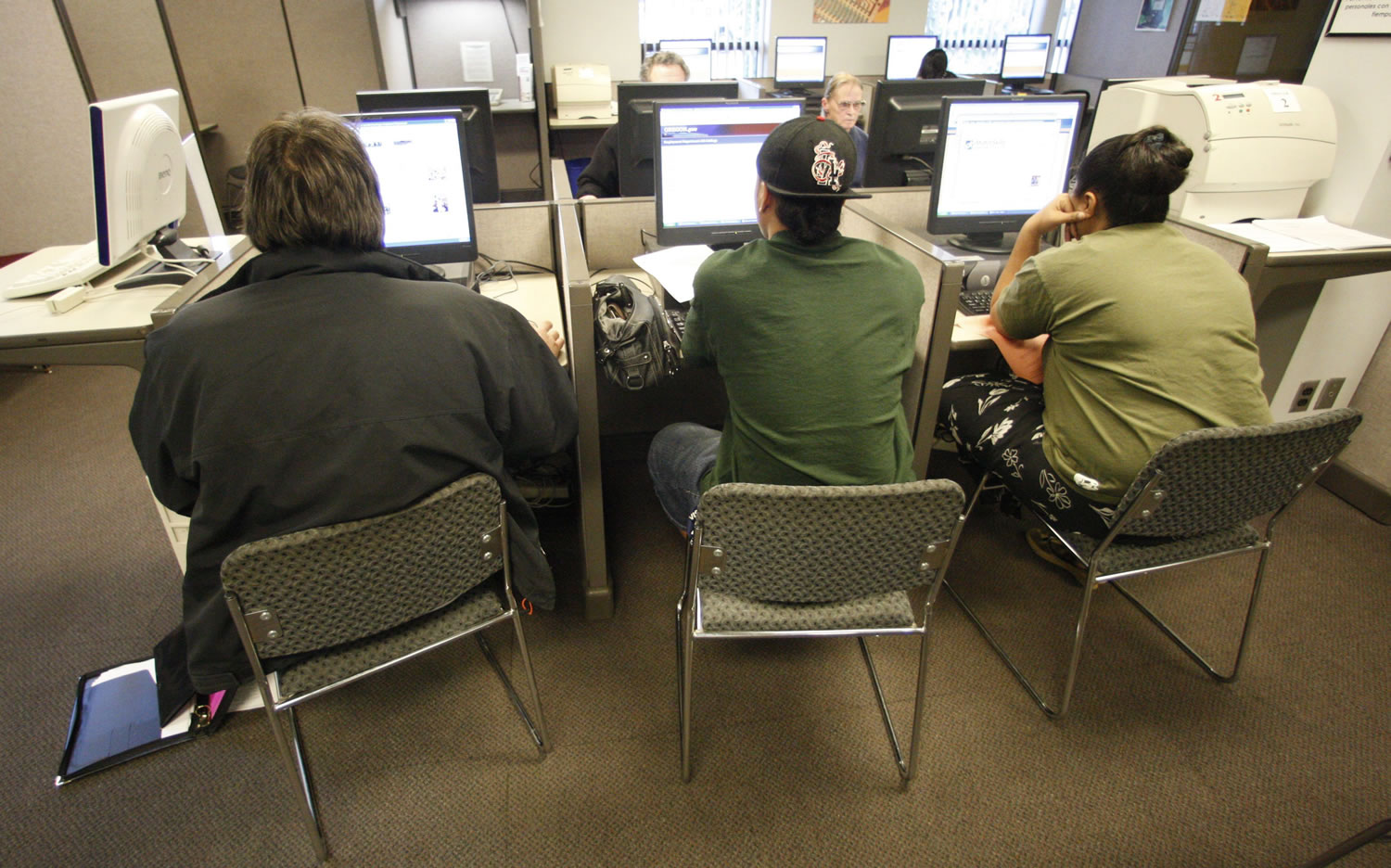Clark County employers have added a net 1,200 jobs in the past 12 months, and the county’s unemployment rate has slowly inched downward, according to figures released Tuesday.
While those numbers indicate progress, they also show the county lagging behind the state’s recovery, Scott Bailey, regional labor economist for the state Employment Security Department, said Tuesday.
And the decline in the county’s jobless rate — it went from 13.2 percent in November 2010 to an estimated 11 percent in November 2011, roughly a two percentage point drop — is mainly because unemployed workers have given up looking for work, Bailey said.
As a result, the labor force participation rate has fallen and, along with it, the county’s jobless rate. “There was slow employment growth, but not enough to put a dent in unemployment,” Bailey wrote in his “Southwest Washington Labor Market News” report. “The revised unemployment rate has trended downward, but only because workers have been giving up on finding a job.”
What’s more, first-time claims for unemployment insurance remain at high levels, Bailey wrote, “indicating that while there are net job gains, there’s still considerable job loss being generated.”
Private gains, public losses
Tuesday’s labor market report underscored Clark County’s continuing struggle to find its economic footing four years after the onslaught of the recession.
And although the U.S. and Washington state labor markets have shown some signs of healing, the broader threat of the European debt crisis looms.
In its “2012 Annual Global Outlook,” released last week, Seattle-based Russell Investments — the international financial services firm — said the key risk to improvement in the world’s economy is “the fragility of the European banking system” and the potential for “European policy errors and inaction.”
In Clark County, private-sector employers have added a net 1,500 jobs since November 2010.
The gains were concentrated in professional and business services, which added 700 jobs, and education and health services, which added 600.
However, the construction industry has yet to find a bottom: It shed 300 jobs over the past 12 months. That’s after the construction sector had already lost more than 4,000 jobs since February 2008.
Government job cuts also are acting as a drag on the local economy. Public-sector employers have chopped a net 300 jobs since November 2010, further blunting private-sector gains and leaving the county’s labor market with a year-over-year net gain of 1,200 jobs last month.
That likely pegged November’s unemployment rate at roughly 11 percent.
As expected, October’s unemployment rate, which had been reported at 9.1 percent according to preliminary figures, rose to 11.4 percent, Bailey’s report showed.
The revised jobless rate for October accounts for unemployed Clark County residents who previously worked in Oregon.
State picture looks different
While Clark County’s labor market remains sluggish, the opposite is true for Washington state, according to Bailey, where an improvement in the jobless rate — from 9.3 percent in November 2010 to 8.7 percent in November 2011 — appeared to be caused by job creation, not unemployed workers giving up looking for work.
Bailey said different parts of the state are seeing different levels of economic activity. In Bellingham, for example, Canadian shoppers, taking advantage of a weak dollar, are flooding the city’s retail scene.
In King County, where the unemployment rate was 8 percent in October, Microsoft and Boeing — two anchors of the state’s economy — are doing relatively well.
“But it just hasn’t translated here,” Bailey said of Clark County.
That’s partly because the county has lost manufacturing jobs that haven’t come back, Bailey said. It’s also partly because the recession gouged the county’s construction industry.
“Underneath that is all the debt and borrowing that went on,” Bailey said.
And while King County has Microsoft and Boeing, and Hillsboro, Ore., has Intel, Bailey said, there’s a “lack of a driver locally of additional employment.”
The earliest realistic time line for the county’s economy to return to pre-recession employment levels is five years, according to an analysis by Bailey, and even then the odds aren’t good.
To recover by 2016 and drive down the unemployment rate to 5 percent, the county’s job growth would have to average 4 percent a year, or 5,300 jobs annually. The county would have to create roughly 442 jobs per month to recover by 2016.
There are no signs that such rapid growth is on the horizon.
Aaron Corvin: http://twitter.com/col_econ; http://on.fb.me/AaronCorvin; 360-735-4518; aaron.corvin@columbian.com.




